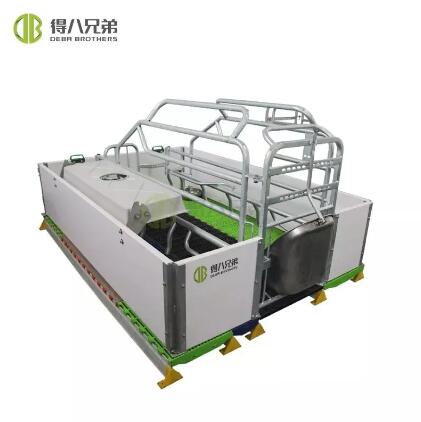Economics of Innovation: The Implications of Adopting European-Style Farrowing Crates for Pig Producers
2024-02-22
In the dynamic landscape of pig farming, innovation plays a pivotal role in driving efficiency, productivity, and profitability. European-style farrowing crates, known for their emphasis on animal welfare and performance, have emerged as a progressive option for pig producers seeking to enhance sow comfort, piglet safety, and overall farm sustainability. In this blog post, we'll explore the economic implications of adopting European-style farrowing crates for pig producers, shedding light on the potential costs, benefits, and considerations involved in this transition.
Initial Investment Costs
One of the primary considerations for pig producers contemplating the adoption of European-style farrowing crates is the initial investment costs. European-style crates often entail a higher upfront investment compared to conventional alternatives due to their advanced design features, quality construction materials, and enhanced functionality. However, it's essential to view this investment as a long-term commitment to improving animal welfare, productivity, and farm profitability.
Operational Efficiency
While the initial investment in European-style farrowing crates may be higher, the potential for improved operational efficiency can yield significant long-term benefits for pig producers. Enhanced design features, such as adjustable components, improved ventilation systems, and ease of cleaning, contribute to streamlined management practices, reduced labor requirements, and increased productivity. By optimizing sow comfort, piglet survival rates, and overall herd health, European-style crates can lead to higher production outputs and improved economic performance over time.
Reduced Veterinary and Medication Costs
The adoption of European-style farrowing crates can also result in potential savings on veterinary and medication costs. By providing a more conducive environment for sow farrowing and piglet nursing, these crates can help reduce the incidence of health issues such as stress-related conditions, respiratory problems, and injuries. Lowering the occurrence of health issues translates into fewer veterinary interventions and medication expenses, contributing to overall cost savings and improved profitability for pig producers.
Market Access and Consumer Demand
Furthermore, the adoption of European-style farrowing crates aligns with evolving consumer preferences and market demands for ethically produced pork products. As consumers increasingly prioritize animal welfare and sustainability in their purchasing decisions, pig producers that demonstrate a commitment to responsible farming practices stand to gain a competitive advantage in the marketplace. By investing in European-style farrowing crates, pig producers can differentiate their products, access premium markets, and command higher prices, ultimately enhancing their economic viability and brand reputation.
Conclusion: Investing in Sustainable Success
In conclusion, while the adoption of European-style farrowing crates entails initial investment costs, the economic implications for pig producers are multifaceted and far-reaching. By prioritizing sow comfort, piglet safety, and operational efficiency, European-style crates offer the potential for improved productivity, reduced veterinary costs, enhanced market access, and increased profitability in the long run. As pig producers navigate the complexities of the modern farming landscape, investing in innovative solutions like European-style farrowing crates represents a strategic move towards sustainable success, resilience, and prosperity in the pork industry.



